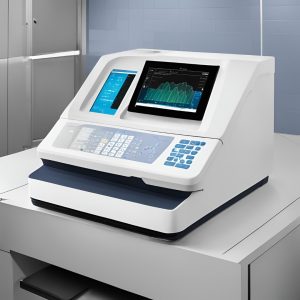History of Biochemistry Analyzer
Biochemistry analyzers are essential machines in medical laboratories, used to analyze blood, urine, and other body fluids for diagnostic purposes. Over time, these machines have advanced significantly, improving both speed and accuracy. Here’s a look at how biochemistry analyzers have evolved over the years.
Early Days of Biochemistry Testing
The Birth of Biochemical Assays
In the late 19th and early 20th centuries, biochemistry was still a new field. Scientists started studying metabolic pathways and how cells function. This led to the development of basic tests to measure chemical reactions in the body, like how much glucose or cholesterol is in the blood.
Colorimetry: The First Method
One of the first methods used was colorimetry, where the color of a solution was measured to find out how much of a certain chemical was present. This was a manual process, but it paved the way for more advanced machines.

Automation Begins (1950s-1970s)
The Rise of Laboratory Automation
As hospitals and labs needed faster results, scientists began developing machines to automate these tests. By the 1950s, early machines like centrifuges helped speed up the testing process. However, full automation was still a few years away.
The Technicon AutoAnalyzer (1957)
One of the first automated biochemistry analyzers was the Technicon AutoAnalyzer, invented by Leonard Skeggs in 1957. This machine could perform multiple tests at once by passing samples through tubes, making lab work much more efficient. It was a huge breakthrough in laboratory automation.
Advancements in Technology (1980s-2000s)
Microprocessors Make a Difference
In the 1980s, microprocessors changed everything. In the 1980s, microprocessors transformed biochemistry analyzers. These tiny computers enabled the machines to handle various tests on the same sample with greater accuracy and minimal human input.
Multichannel Analyzers
Machines also became more sophisticated, with multichannel analyzers running several tests at the same time. This was especially useful in hospitals where many patients needed tests done quickly.

Dry Chemistry Analyzers
Around the same time, dry chemistry analyzers were introduced. Instead of using liquid chemicals, these machines used strips with chemicals already on them, making the testing process even easier and reducing the chances of contamination.
Modern Biochemistry Analyzers (2000s to Present)
Fully Automated Systems
Today, biochemistry analyzers operate with full automation. Robotic systems manage the samples, eliminating the need for human involvement.This allows for high-speed testing in large labs, processing thousands of samples a day.
Point-of-Care Testing (POC)
With the development of point-of-care analyzers, testing can now be done outside the lab, such as in hospitals or clinics. These portable machines provide quick results for essential tests like blood glucose or kidney function, helping doctors make faster decisions.
Integration with Data Systems
Modern machines are connected to laboratory information systems (LIS), which allows for real-time data sharing and reporting. This means doctors can get results faster and track patient data more effectively.

Future of Biochemistry Analyzers
Lab-on-a-Chip Technology
Looking to the future, lab-on-a-chip technology promises to miniaturize biochemistry analyzers even more. These tiny devices can perform complex tests on a small chip, potentially revolutionizing diagnostics.
Wearable Analyzers
In the coming years, we might see wearable biochemistry analyzers that can monitor a patient’s health in real time. This could provide continuous data on important biomarkers like blood sugar or cholesterol levels.

